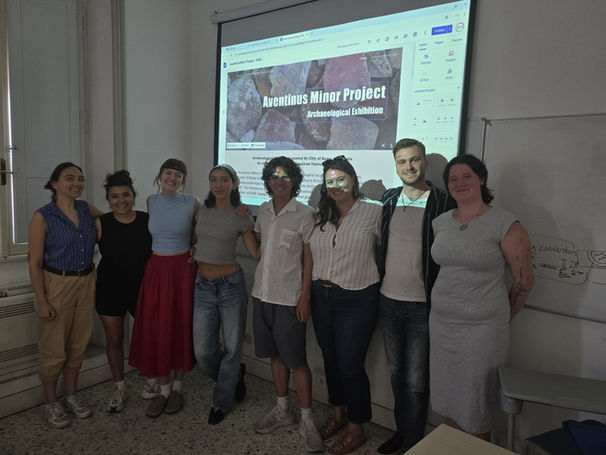Meet the Team

Mirella Serlorenzi
Sopraintendenza Speciale di Roma

Lucrezia Campagna
Materials Supervisor

Ilaria de Luca
Finds Specialist and Ceramicist (2023/2024)

Federico Fasson
GIS and Drone Specialist

Inge Weustink
Director of the Dr. Helen Pope Lyceum at St. Stephen's

Aimee Scorizello
Community Archaeology Specialist

Letizia Rustico
Sopraintendenza Speciale di Roma

Sandro Blasi
Site Construction

Marije van der Vorm
Chair, History Department Chair at St. Stephen's
St. Stephen’s Teachers and Staff
Jan Claus Di Blasio, Natalie Edwards, Viktorija Podagelyte, Inge Weustink, Rebecca Raynor, Paul Treherne, Rebecca Masson, Elizabeth Nye Di Cataldo, Marije van der Vorm, Lisa Fedich, Oscar De Amicis, , Esmerelda Lundius, Peter Rotundo, Fausto di Marco, Jill Muti (Head of School), Eric Mayer (Former Head of School)
Research Assistants






2021 Derek Cebrian, AUR class of 2020, Giuliana Trinchieri, AUR class of 2021
2022 Ana Sofia Meneses Pineda, AUR class of 2022
2023 Brayden Johnson, AUR class of 2023, Jenny Johnson, AUR class of 2023, Keelie Rix, AUR class of 2020
2024 Molly Buhaenko, AUR class of 2024, Andrea Reyes, AUR class of 2024
2025 Joey Michelson, AUR class of 2025, Nichole Reed, AUR class of 2026
The Team Throughout the Years
2021 Ana Sofia Meneses Pineda, Brayden Johnson, Giuliana Trinchieri, Jaime Harrison, Kim Van Der Haven, Natalie Edwards, Sarah Tucci, Brandon Hummel, Derek Cebrian, Ginny Branwen, Jenny Johnson, Marcus D’Agostini, Orlando Guerrero
2022 Molly Buhaenko, Paul Carpenter, Jaime Harrison, Brayden Johnson, Jenny Johnson, Andrea Reyes Brandon Hummel, Ali Librizzi, David Bidleman
2023 Francesca Bizzarri- Black, Molly Buhaenko, Mark Gardella, Maribel Guillen, Theodore Janas, Mayte Magallon, Joey Michelson, Andrea Reyes, Charles Schwebs, Maria Tan, Cole Chester, Luceille Humphrey (Wellesley), Shawna Hyland (AUR alum), Jia Jia Lai (National University of Singapore), Lucy Meola (Hamilton), Saige Pierson (St. Olaf), Emma Ross (Wellesley), Brayden Johnson, Jenny Johnson, Keelie Rix, Ana Sofia Meneses Pineda
2024 Ella Brillant, Sydney Butcher, Flor Camerena, Christine Garcia, Madison Current, Nichole Reed, Nikko Markakos, Mayte Magallon, Samantha McGee, Jaime Tatum, Olivia Thornberry, Alena Woolwine, Joey Michelson, Keelie Rix, Molly Buhaenko, Andrea Reyes, Ana Sofia Meneses Pineda, Cole Chester
2025 Franklin Chung, Olexa Hudran, Martin Joseph, Lila San Miguel, Michela Herbert, Ivette Serna, Nichole Reed, Joey Michelson, Nikko Markakos
AMP Scholarships
2021 Ana Sofia Meneses Pineda and Marcus D’Agnostini
2022 Jenny Johnson and Brayden Johnson
2023 Molly Buheanko, Andrea Reyes, Jia Jia Lai, Emma Ross, Saige Pierson
2024 Flor Camerena, Christine Garcia, Nichole Reed, Alena Woolwine















